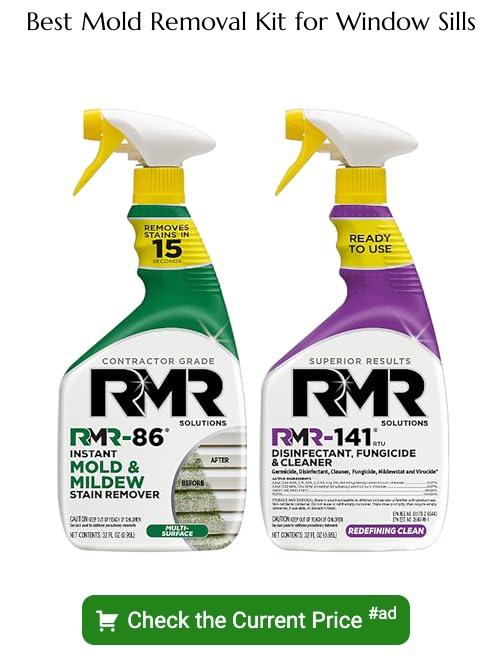Discover how mold on your window sills can potentially impact your health and well-being, as we delve into the risks and prevention methods for this common household issue.
Have you ever noticed black or green spots on your window sills and wondered what they are? Well, those spots could be mold, and they may be more harmful than you think. Mold is a common problem in many households, especially during the rainy season or in areas with high humidity levels.
Not only does it look unsightly, but it can also cause health problems if left unaddressed. In this blog post, we’ll explore whether mold on window sills can make you sick and what steps you can take to prevent its growth.
So let’s dive right in!
Key takeaways:
- Mold on window sills can cause health problems.
- Different types of mold can grow on window sills.
- Mold growth is caused by excess moisture and poor ventilation.
- Mold exposure can lead to respiratory issues and allergies.
- Regular cleaning and proper ventilation can prevent mold growth.
Types of Mold On Window Sills
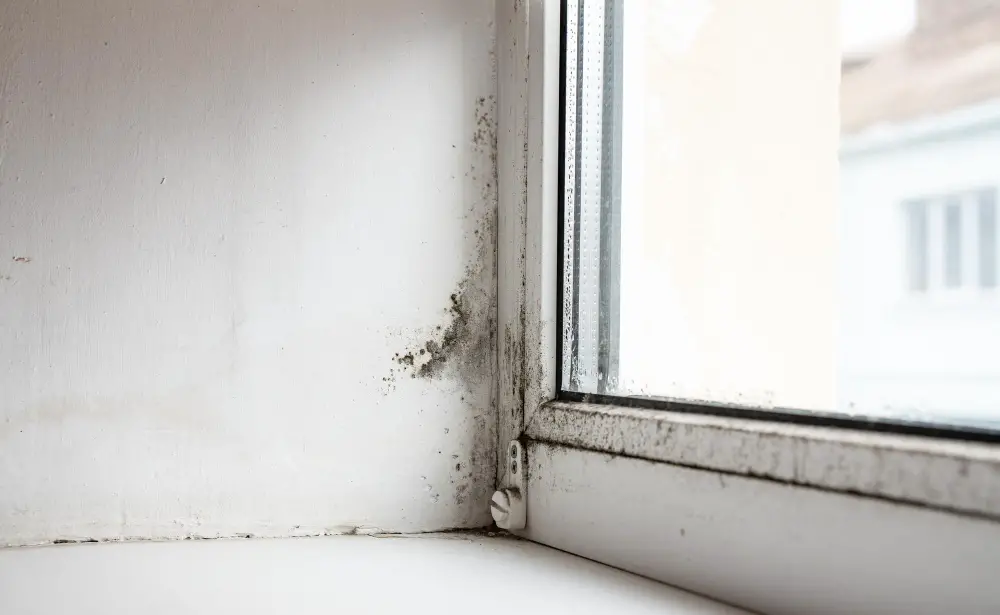
Mold is a type of fungus that can grow in damp and humid environments. There are several types of mold that can be found on window sills, including Aspergillus, Penicillium, Cladosporium, and Alternaria.
Each type has its own unique characteristics and potential health risks.
Aspergillus is a common indoor mold that grows on organic materials such as wood or paper products. It can cause respiratory problems in people with weakened immune systems or allergies.
Penicillium is another common indoor mold found on window sills. It produces allergens which may trigger allergic reactions such as sneezing or runny nose.
Cladosporium is an outdoor mold commonly found indoors during the summer months when windows are open for ventilation purposes. Exposure to this type of mold may cause respiratory issues like asthma attacks.
Alternaria thrives in damp areas like bathrooms and kitchens but it’s also known to grow on window sills where moisture accumulates due to condensation from temperature changes between inside/outside air temperatures.
Causes of Mold Growth
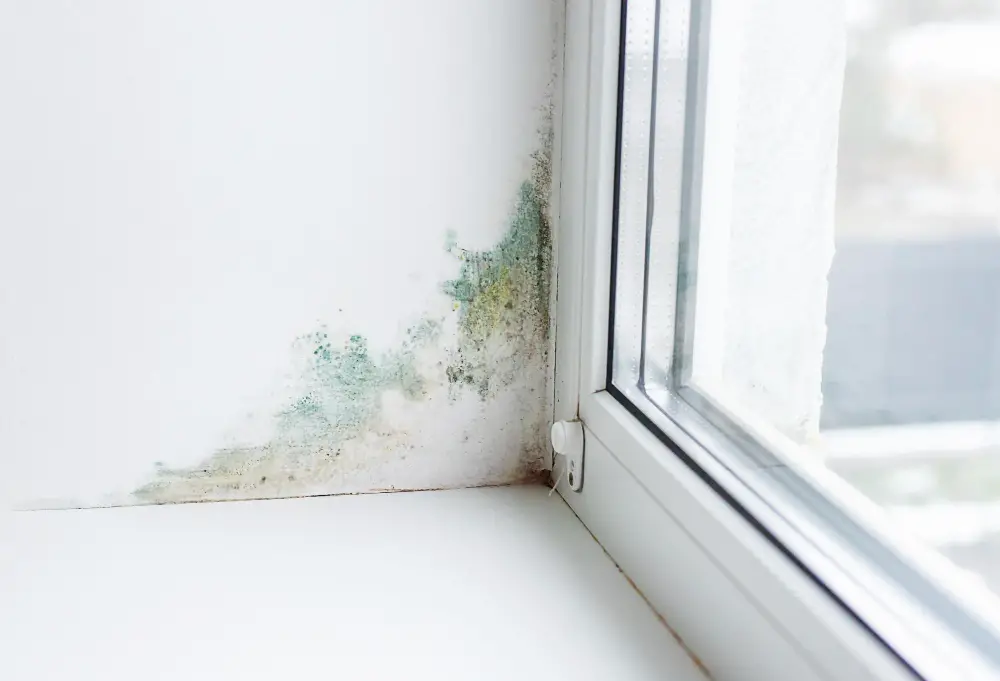
One of the most common causes is excess moisture, which creates an ideal environment for mold to thrive. This moisture can come from various sources such as condensation, leaks in the roof or walls, and even high humidity levels in your home.
Another cause of mold growth on window sills is poor ventilation. When there isn’t enough airflow around your windows, it creates stagnant air that traps moisture and encourages mold growth.
Dirty windows are more likely to develop mold than clean ones because dirt provides a food source for molds to grow on.
It’s important to identify the root cause of any mold problem so you can take steps towards preventing its recurrence.
How Does Mold Grow On Windows?
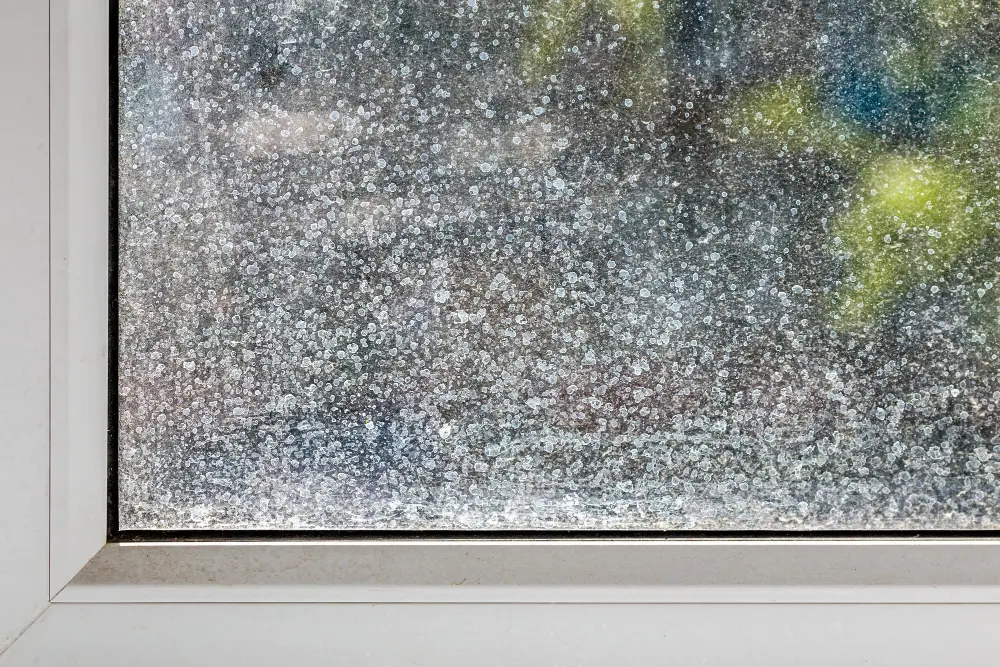
When moisture accumulates on the windowsill due to condensation or water leaks, it creates an ideal breeding ground for mold spores. The spores can quickly multiply and spread across the surface of your window sill if left unaddressed.
Moreover, organic materials such as dirt or dust that accumulate on the windowsill provide nutrients for mold growth. These substances contain cellulose which is a food source that sustains mold colonies.
It’s essential to keep your windows clean and dry regularly to prevent moisture buildup from occurring in the first place. Fixing any leaks around your home will help reduce humidity levels indoors – this will make it less likely for molds to grow on surfaces like window sills.
Health Risks Associated With Mold

Exposure to mold spores can cause a range of symptoms, including coughing, wheezing, and shortness of breath. In some cases, it may even trigger an asthma attack or lead to the development of chronic lung diseases.
Moreover, prolonged exposure to mold has been linked to other health issues such as headaches and fatigue. It’s important not only to address visible signs of mold growth but also take preventative measures against its spread in your home.
Symptoms of Mold Exposure
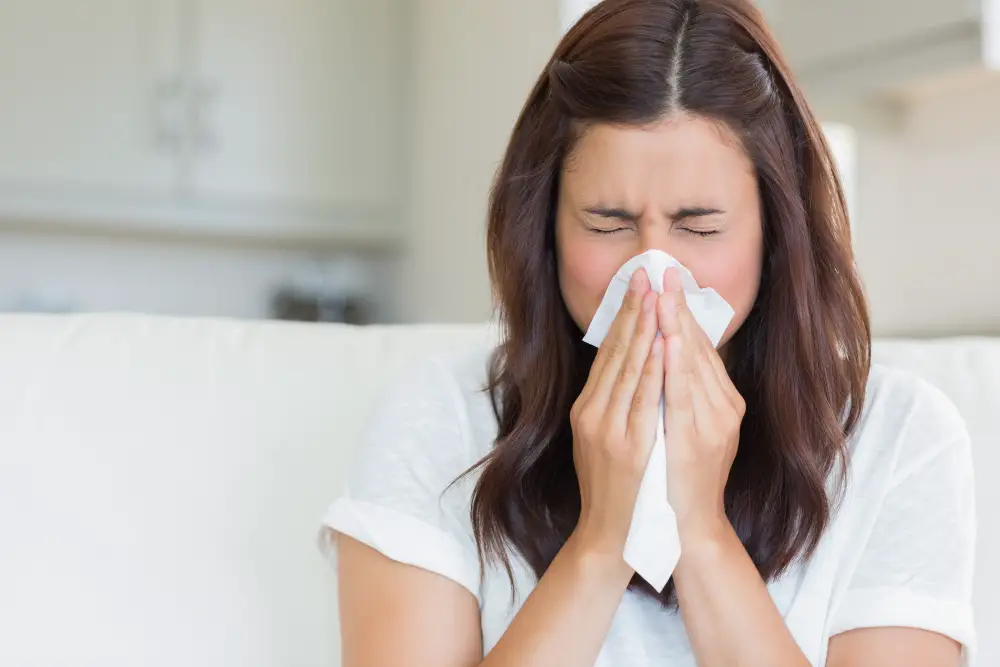
The symptoms of mold exposure vary depending on the individual’s sensitivity to mold and the amount and duration of their exposure. Some common symptoms include coughing, sneezing, runny nose, itchy eyes or skin irritation.
In some cases, prolonged exposure to mold can lead to more severe reactions such as difficulty breathing or asthma attacks. People with allergies may experience more intense allergic reactions when exposed to molds.
It is important not only to identify any visible signs of mold growth but also be aware if you are experiencing any unusual physical symptoms that could be related to its presence in your home. If you suspect that you have been exposed to harmful levels of indoor molds and are experiencing persistent health issues like headaches or fatigue consult a medical professional immediately.
Mold-Related Respiratory Issues

When mold spores are inhaled, they can cause irritation and inflammation of the airways, leading to various respiratory problems. Some people may experience mild symptoms such as coughing or sneezing, while others may develop more severe conditions like asthma or bronchitis.
Individuals with pre-existing respiratory conditions such as allergies or asthma are particularly vulnerable to the effects of mold exposure. Exposure to toxic black mold (Stachybotrys chartarum) can also lead to serious health complications like pulmonary hemorrhage.
If you suspect that you have been exposed to high levels of indoor molds and experiencing any unusual symptoms related to your breathing patterns, it is essential that you seek medical attention immediately.
Allergies and Mold

Exposure to mold spores can trigger allergic reactions in some people, causing sneezing, runny nose, itchy eyes or skin rashes. In severe cases, exposure to mold may lead to asthma attacks or other respiratory problems.
Mold produces allergens that are easily airborne and can be inhaled by anyone nearby. These allergens cause the immune system of sensitive individuals to overreact leading them into an allergic reaction.
It’s important for those with allergies or asthma to take extra precautions when dealing with household molds like those found on window sills. If you notice any signs of mold growth around your windows such as discoloration or a musty odor; it is best advised that you seek professional help immediately before attempting any DIY removal methods which could worsen the situation.
Mold’s Impact On Immune System
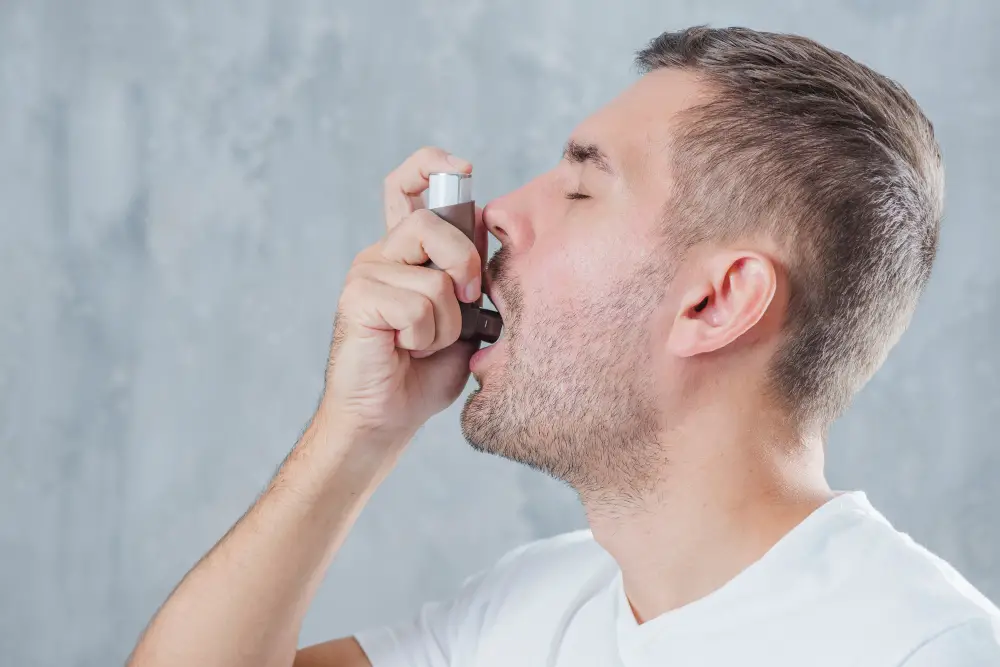
When mold spores are inhaled or come into contact with the skin, they can trigger an allergic reaction that weakens the body’s natural defenses against infections and diseases. This is particularly concerning for people with pre-existing respiratory conditions such as asthma or chronic obstructive pulmonary disease (COPD).
Mold exposure has been linked to exacerbating these conditions and increasing their severity.
Moreover, some types of mold produce mycotoxins – toxic substances that can cause serious health problems when ingested or inhaled. These toxins may affect different organs in the body and lead to symptoms such as headaches, fatigue, nausea/vomiting/diarrhea/abdominal pain (if ingested), skin irritation/rashes/blisters (if touched), eye irritation/redness/watery eyes/blurred vision/sensitivity to light (if contacted through eyes).
It’s important to note that not everyone reacts similarly when exposed to mold; some individuals may experience mild symptoms while others could develop severe reactions requiring medical attention.
Vulnerable Populations to Mold

Vulnerable populations include infants, young children, pregnant women, elderly individuals and those with weakened immune systems or pre-existing respiratory conditions such as asthma or allergies. For these groups of people, even a small amount of mold can cause serious health problems.
Infants and young children have developing immune systems that may not be able to fight off infections caused by mold exposure. Pregnant women are also at risk because they may experience hormonal changes that make them more sensitive to environmental toxins like molds.
Elderly individuals often have weaker immune systems due to age-related decline in bodily functions which makes them vulnerable too. Those who already suffer from respiratory issues like asthma or allergies can experience worsened symptoms when exposed to molds on window sills.
It’s important for these vulnerable populations and their caregivers/loved ones take extra precautions against mold growth in their homes by regularly cleaning windowsills and ensuring proper ventilation is maintained throughout the house.
Toxic Black Mold and Stachybotrys Chartarum
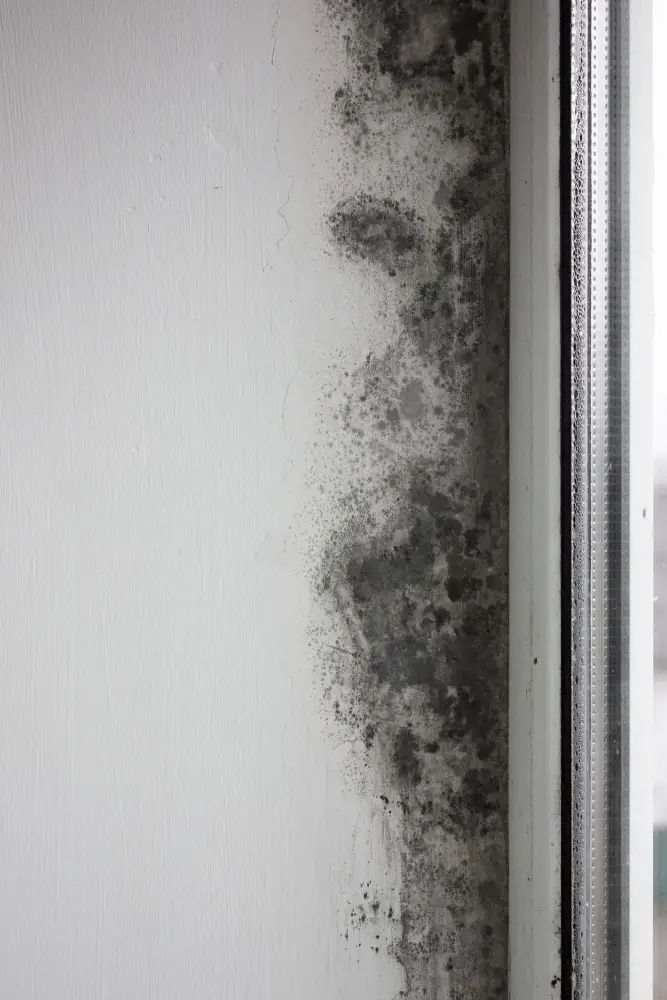
This particular type of mold is notorious for its toxicity and has been linked to serious health problems such as respiratory issues, allergies, headaches, fatigue and even depression.
Stachybotrys chartarum thrives in damp environments with high humidity levels. It’s commonly found in areas where water damage has occurred or where there are leaks or condensation problems.
If you suspect that you have toxic black mold growing on your window sills or elsewhere in your home it’s important to take action immediately.
Removing toxic black mold from your windowsill requires special care due to the potential health risks involved. It’s recommended that you hire a professional who specializes in removing this type of hazardous material safely and effectively.
Prevention is key when it comes to avoiding the growth of toxic black molds like Stachybotrys chartarum on window sills.
How Mold Affects Indoor Air Quality
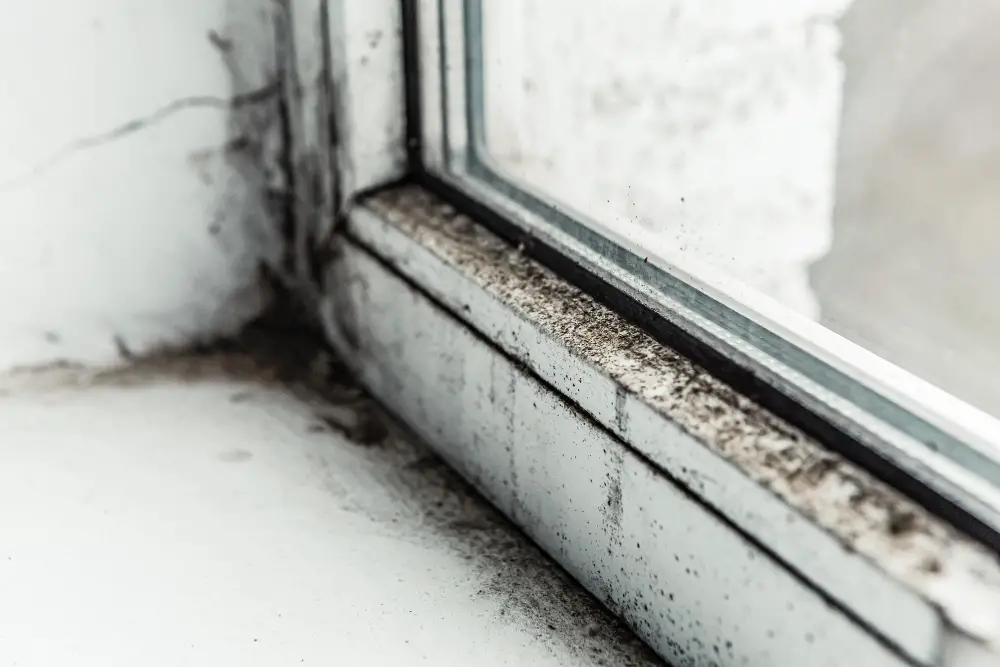
When mold spores are released into the air, they can be inhaled and cause respiratory problems such as coughing, wheezing, and shortness of breath. In some cases, exposure to mold spores may even trigger asthma attacks or allergic reactions.
Moreover, when left unaddressed for an extended period of time, mold growth can spread beyond just your window sills and affect other areas in your home. This could lead to more severe health issues if not dealt with promptly.
To prevent these risks from occurring it’s essential to take steps towards improving indoor air quality by addressing any potential sources of moisture that contribute to mold growth. Proper ventilation is also crucial as it helps reduce humidity levels which create ideal conditions for molds’ development.
Mold on window sills is not only unsightly but also poses serious health risks if left unchecked.
Signs of Mold On Window Sills
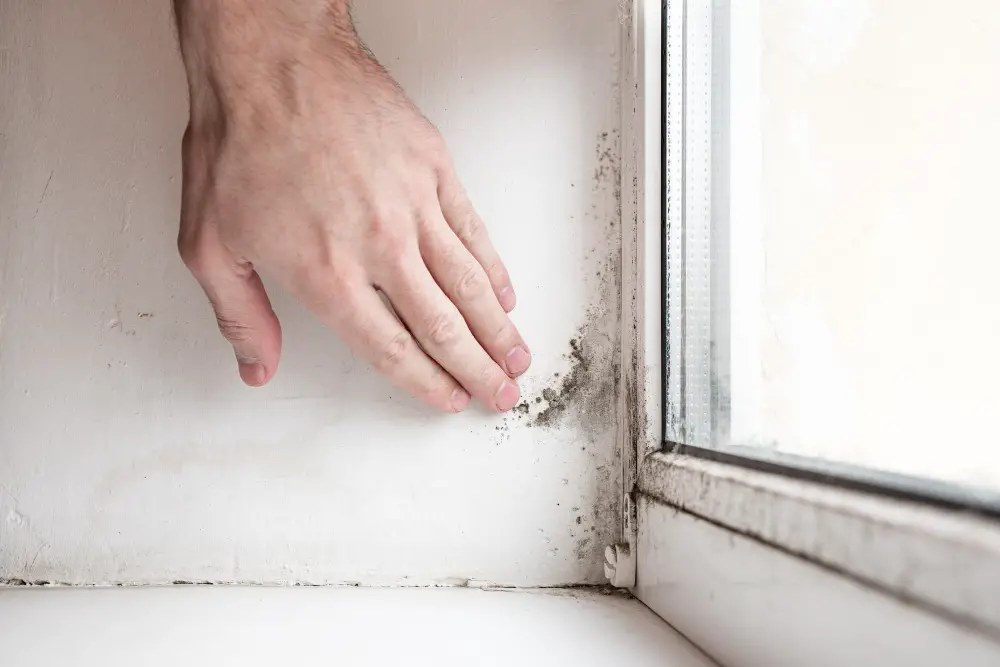
Mold can appear in different forms and colors, so it’s essential to know what signs you should look out for. Some common indicators of mold on window sills include black or green spots, a musty odor, and discoloration or warping of the wood around the windows.
If you notice any of these signs, it’s crucial that you take action immediately before the problem worsens. Ignoring mold growth can lead to more significant health risks and costly repairs down the line.
Regularly inspecting your windows for any visible signs of mold is an effective way to prevent its spread throughout your home. If left unchecked, spores from one area could easily travel through air ducts or open doors into other parts of your house.
In addition to visual cues like discoloration and odors, keep an eye out for condensation forming on windows as this moisture buildup creates a perfect environment for mold growth.
Preventing Mold On Window Sills
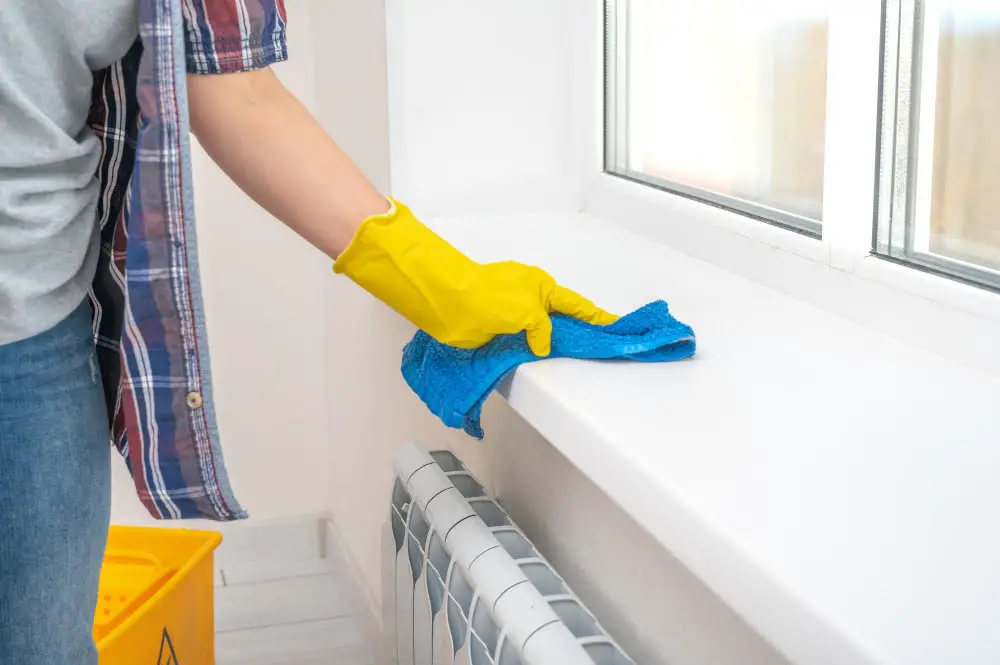
Here are some tips for preventing mold from growing on your window sills:
1. Keep Your Windows Clean: Regularly cleaning your windows and wiping down the sills can help prevent moisture buildup, which is a breeding ground for mold.
2. Proper Ventilation: Ensure proper ventilation in your home by opening windows or using exhaust fans when cooking or showering.
3. Use Dehumidifiers: If you live in an area with high humidity levels, consider investing in a dehumidifier to reduce excess moisture in the air.
4. Fix Leaks Promptly: Any leaks around your windows should be fixed promptly as they can lead to water damage and promote mold growth.
5. Inspect Your Home Regularly: Conduct regular inspections of areas prone to dampness such as basements and bathrooms so that any signs of water damage or leaks can be addressed immediately before they become bigger problems.
Proper Ventilation for Mold Prevention
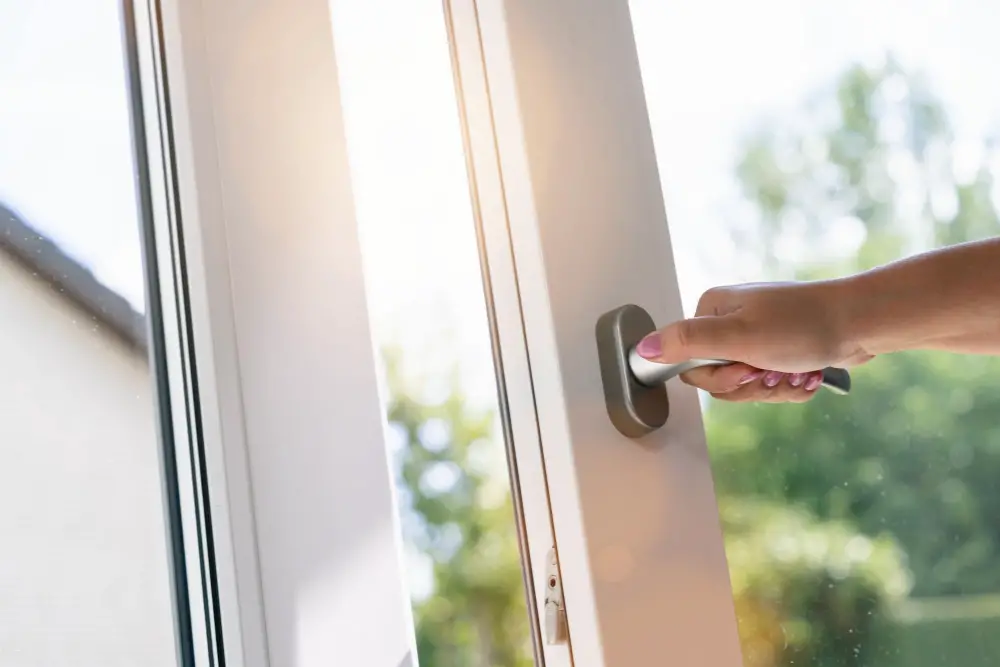
Good air circulation helps to reduce moisture levels, which are a breeding ground for mold spores. You can improve ventilation by opening windows and doors regularly, especially during humid weather conditions.
Another way to enhance airflow is by using exhaust fans in areas prone to moisture buildup such as bathrooms and kitchens. These fans help remove excess humidity from the air before it settles on surfaces like windowsills.
You should ensure that all vents and ducts are free from blockages or obstructions that may hinder proper airflow throughout your home. Regular cleaning of these systems will also help keep them functioning optimally.
Regular Window Cleaning
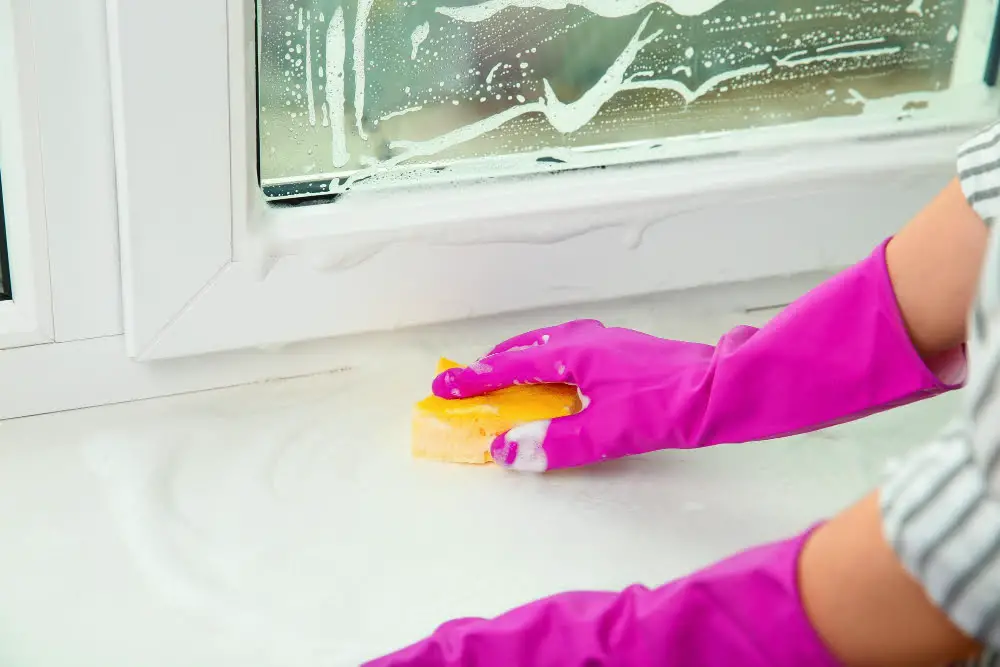
Regular cleaning can help remove any dirt, dust, or moisture that may contribute to mold growth. It’s recommended that you clean your windows at least once a month using a mild detergent and warm water.
When cleaning your windows, pay close attention to the corners and edges where mold tends to grow. Use a soft-bristled brush or sponge to scrub away any visible signs of mold before wiping down with a dry cloth.
It’s important not only to focus on the inside but also outside surfaces of your windows as they are exposed more frequently than indoor ones. Outdoor elements such as rainwater can easily accumulate in crevices around window frames leading up for potential breeding grounds for molds if left unattended.
Dehumidifiers and Mold Control
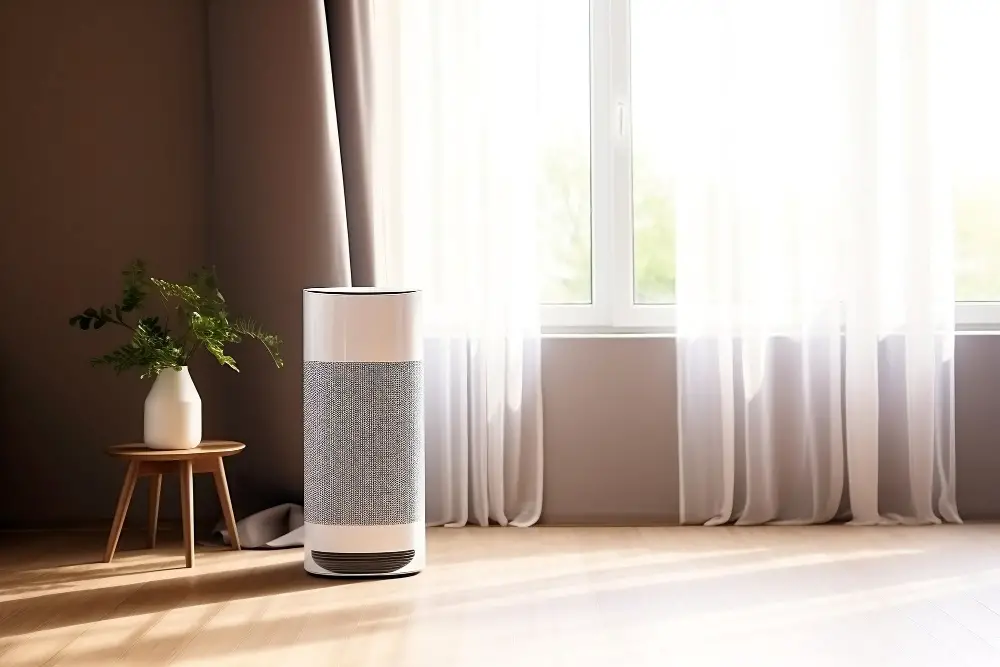
These devices work by removing excess moisture from the air, which is a key factor in mold growth. By reducing humidity levels, dehumidifiers can help prevent new mold spores from forming and stop existing ones from spreading.
When using a dehumidifier for mold control, it’s important to choose the right size for your space. A small unit may not be powerful enough to handle larger rooms or high humidity levels, while an oversized one could waste energy and money.
To get the most out of your dehumidifier, place it in areas where moisture tends to accumulate such as bathrooms or basements. You should also clean and maintain it regularly according to manufacturer instructions.
While a dehumidifier can be helpful in preventing future outbreaks of mold on window sills or elsewhere in your home, keep in mind that it won’t eliminate existing colonies entirely.
Detecting Mold in Your Home

There are some signs that you can look out for to determine if mold is present in your home. One of the most common indicators of mold growth is a musty odor.
If you notice an unpleasant smell around your windows or other areas of your home, it could be a sign that mold has started growing.
Another way to detect mold on window sills is by looking for discoloration or staining on the surface. Mold often appears as black or green spots and may spread quickly if left unaddressed.
If you suspect that there’s mold growing in your home but cannot locate its source, consider hiring a professional inspector who specializes in detecting indoor air quality issues like this one.
Mold Testing and Inspection
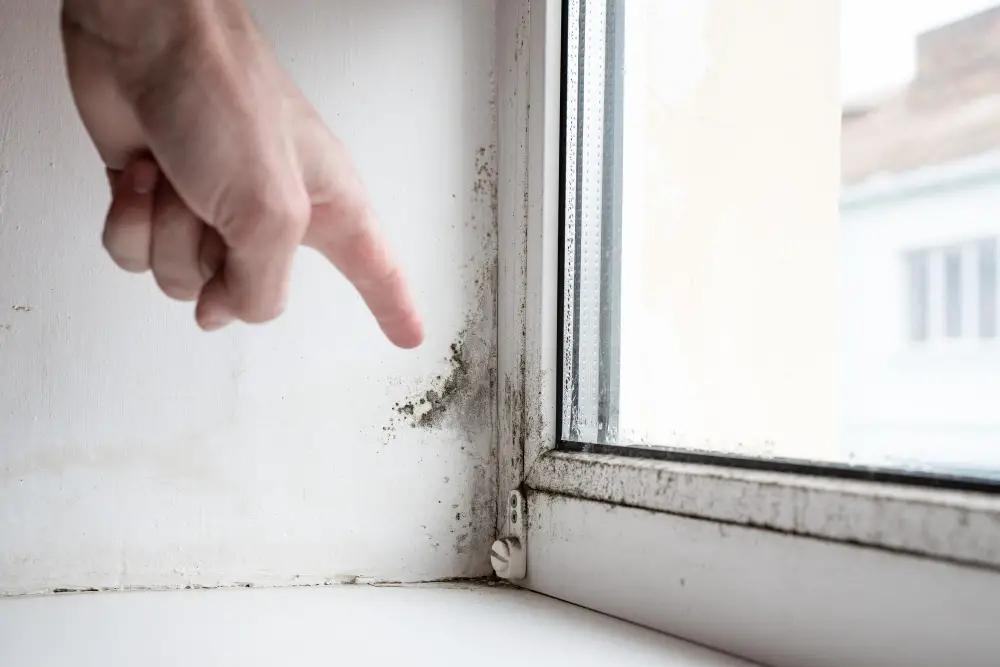
If you suspect that there is mold growth, it’s essential to have a professional conduct an inspection to determine the extent of the problem. Mold testing involves taking samples from different areas of your home, including air samples and surface swabs.
During an inspection, a certified inspector will look for visible signs of mold growth on your windowsills or other surfaces in your home. They may also use specialized equipment such as moisture meters or thermal imaging cameras to detect hidden sources of moisture that could be contributing to mold growth.
Once they’ve identified any potential issues with mold, they’ll provide you with a detailed report outlining their findings and recommendations for remediation if necessary. It’s important not only to identify but also address any underlying causes contributing to the issue so that future occurrences can be prevented.
DIY Mold Removal
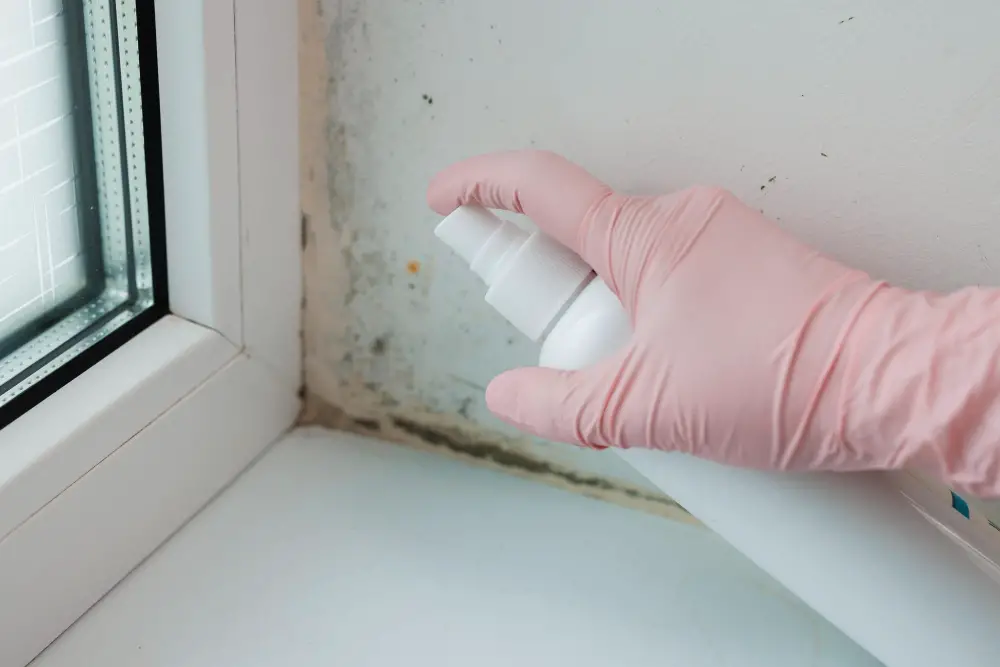
While some types of mold can be removed with simple cleaning methods, others require professional intervention. If the affected area is less than 10 square feet and there are no underlying health issues or allergies present, you may be able to remove the mold yourself.
Before starting any DIY removal process, make sure to wear protective gear such as gloves and a mask that covers your nose and mouth. You should also ensure proper ventilation in the room by opening windows or using fans.
To clean small areas of mold growth on window sills:
- Mix one cup of bleach with one gallon of water.
- Apply the solution onto the affected area using a spray bottle.
- Let it sit for 15 minutes before scrubbing with a brush.
- Rinse thoroughly with water and dry completely.
It’s essential not only to remove visible signs but also address any underlying moisture problems that caused its growth in order for effective prevention from future occurrences.
When to Call a Professional

While some cases of mold can be removed with DIY methods, others require the expertise of a professional. Here are some instances when you should call in a professional:
1. Large areas affected: If the area covered by mold is more than 10 square feet or if there is extensive damage to your windowsill or wall, it’s best to seek help from professionals.
2. Health issues: If anyone in your household has respiratory problems like asthma or allergies that could be aggravated by exposure to mold spores, calling a professional for safe removal and remediation is crucial.
3. Hidden Mold: Sometimes molds grow behind walls and under floors where they cannot be seen easily but still pose health risks; this requires specialized equipment and techniques that only professionals have access too.
4. Repeated Growth: If you’ve tried removing the molds yourself several times without success because they keep coming back after cleaning them up thoroughly then it may indicate an underlying problem such as water leaks which needs fixing before any further attempts at removal can succeed.
Remember that while DIY methods might seem cheaper initially, improper handling of toxic black molds like Stachybotrys Chartarum could lead to severe health complications down the line. So don’t hesitate – call in experts who will assess whether there are any potential hazards associated with removing these fungi safely from your home!
FAQ
Is it normal to have mold on window sills?
Yes, it is normal to have mold on window sills as they provide an optimal environment for its growth due to moisture issues.
Is mold on window sills black mold?
Mold on window sills can be black mold when moisture builds up due to humid weather, a leaky roof, or condensation buildup.
Is it safe to sleep in room with mold?
No, sleeping in a room with mold is unsafe due to prolonged exposure and potential health risks while breathing it in during sleep.
What are the health risks associated with mold exposure from window sills?
Health risks associated with mold exposure from window sills include allergic reactions, respiratory issues, and skin and eye irritations.
How can you effectively prevent mold growth on window sills?
To effectively prevent mold growth on window sills, ensure proper ventilation, maintain low humidity levels, and regularly clean the surfaces with a mixture of water and mild detergent.
What are the best cleaning methods for removing mold from window sills?
The best cleaning methods for removing mold from window sills include using a combination of vinegar, baking soda, or bleach with water, and scrubbing thoroughly with a brush or cloth.
Related Stories
- How to Clean Mold Off Window Sills [Solved]
- How to Clean Window Sills Inside: Effective Techniques & Useful Tips
- Is It Bad to Sleep With Window Open?
- Does a Bathroom Need a Window? [Answered]
- How to Fix Condensation Between Window Panes
Recap
